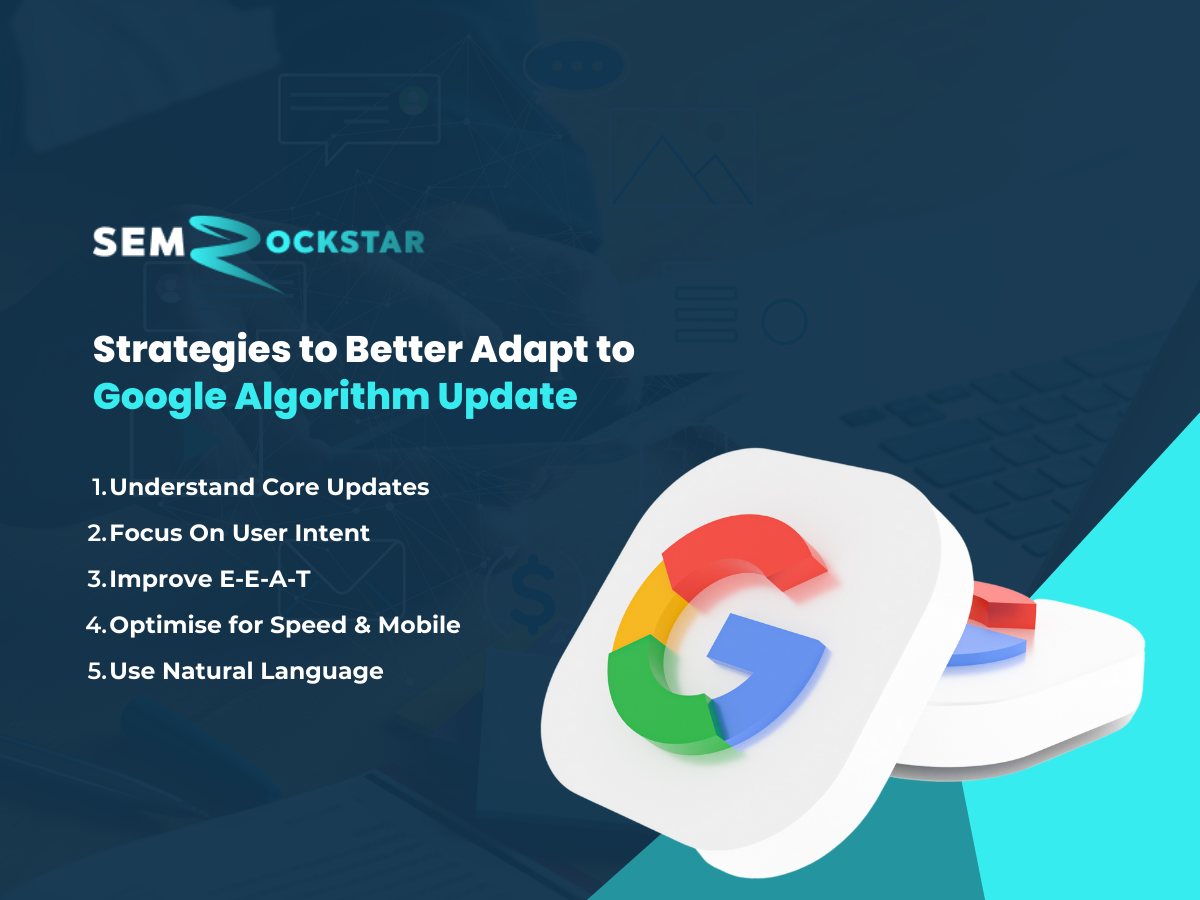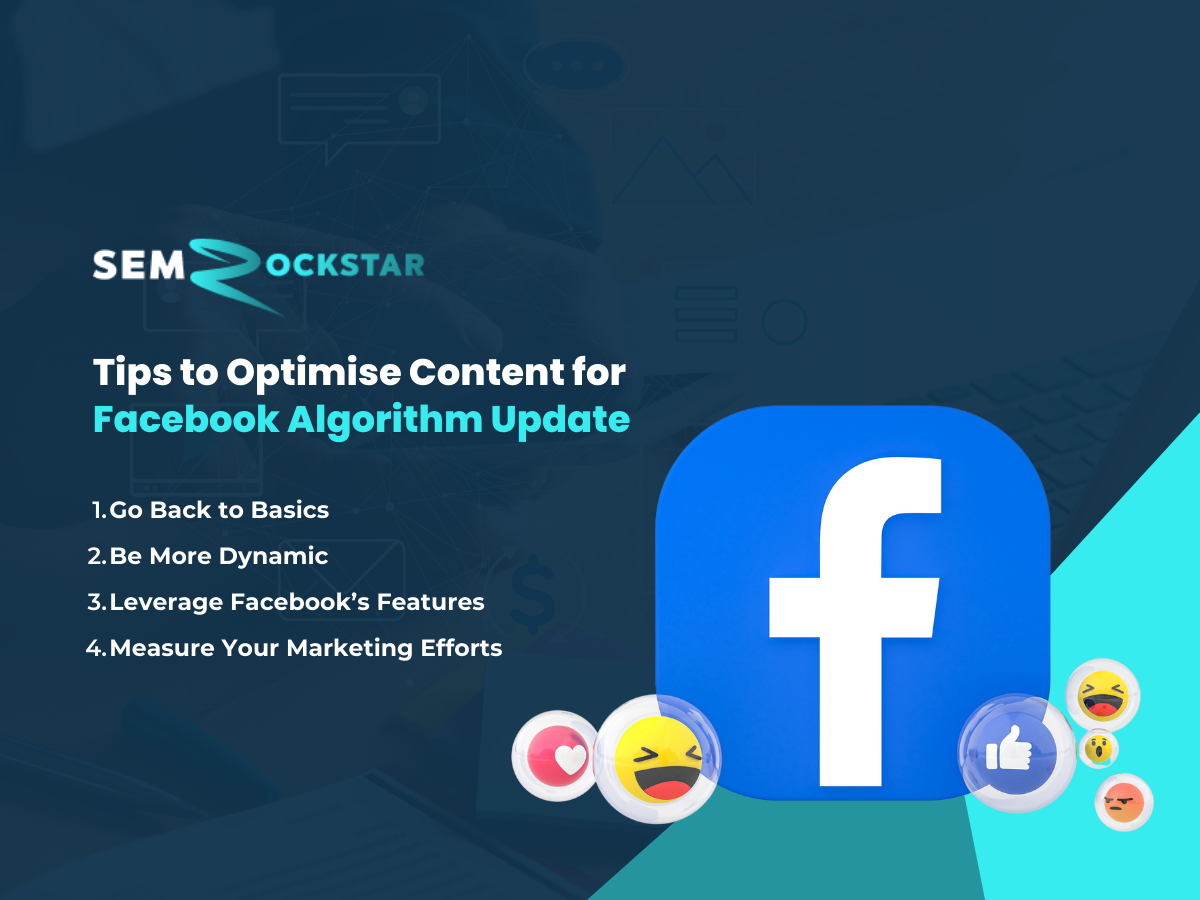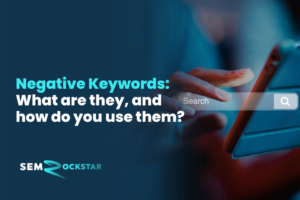Digital marketing is equally a fierce battlefield and a noisy market. Every brand is competing with each other to attract more customers. This is more true on popular marketing platforms like Google and Facebook. Naturally, since these are all dynamic fields, being first to adapt to the latest algorithm update can help you gain the upper hand.
So, to help you achieve just that, we compiled the latest algorithm updates you need to know and how you adapt accordingly. We also added something down below to help you develop a multi-platform marketing strategy.
Importance Of Algorithm Updates In Digital Platforms
In this day and age, everything is fast-paced—moreso in the digital realm. For brands and digital marketers, staying up-to-date with the latest digital marketing trends is crucial.
Undoubtedly, any algorithm update on popular digital platforms can affect your business. It can disrupt how you engage with your audience and how people frequently see your content. But, it goes beyond that. Algorithm updates can also affect your results like your conversion rates and even profit.
Consequently, if you ignore or fail to adapt to the changes set by the platforms you market your brand, then it will negatively affect your business. As such, learning digital marketing updates and fine-tuning your strategies to better adapt to the present and upcoming changes is important.

Google Algorithm Updates
Just last March, Google released the first core update for this year. This update is meant to help the search engine giant to deliver more relevant and high-quality search results by adjusting how the Google algorithm for SEO evaluates and ranks websites.
Here are a couple of things you need to check if you are negatively affected by this update:
- Keep a close eye on your website’s search traffic and keyword rankings. While the update was already rolled out months ago, you may have missed something since chances are not immediately felt.
- Make sure you are providing quality content. This core update is meant to provide better search results, so you can either update some of your existing content or create new articles that are tailor-fit to your audience’s interests and needs.
- Double-check the technical details of your website. Check if your site is still performing well, still mobile-friendly, and still properly indexed.
Moreover, if you are negatively affected by this core update, Google offered a list of questions that you can use to help evaluate your website’s content.
Strategies to Better Adapt to Google Algorithm Update
We can anticipate that there are bound to be more Google search updates that will be released before the year ends. So, to help you adapt easily, here are a couple of strategies
Understand Core Updates
The first thing is to better understand Google’s SEO updates. It is not enough to just know that there is a new update. You also need to know the update’s intent and how it will affect your website.
Focus On User Intent
Google’s end goal has always been to better match the web user’s search intent to provide relevant and useful information. So, on your end, you need to focus on the user’s intent, this includes the purpose of the query and their desired goal. From there, you can update your information about your target audience, keywords, and your existing content accordingly.
Improve E-E-A-T
E-E-A-T stands for Experience, Expertise, Authoritativeness, and Trustworthiness. These four elements are the key markers that Google uses to assess and rank websites and content. For your business, you need to make sure you demonstrate these four elements to help you climb the ranks.
Optimise for Speed and Mobile
Naturally, aside from focusing on your content, you also need to pay attention to what goes on behind your website, which is the technical aspects. Here, you just need to make sure it is properly optimised for speed and mobile to continuously provide a good user experience and further help your SEO ranking.
Use Natural Language
You also need to make sure both your audience and Google understand the information that you share. This means you need to write the way your audience speaks. Thanks to Google’s natural language process capabilities, you just need to make sure it understands the context of your content and how it is relevant to the keywords you use.

Facebook Algorithm Changes
Next up is the latest Facebook algorithm update. Back then, the “Like” button and shares were enough to help your content gain more engagement. However, that is no long the case.
In fact, Meta’s algorithm update for the social media giant has become sophisticated. While it is one of the most complicated out of all other social networking platforms, here are a couple of things that Facebook’s Feed algorithm has consistently considered:
- Inventory - This refers to the total number of posts that your audience sees on an individual basis, which includes their friends, family, the pages they follow, and the groups they are a part of. From this, Facebook prioritises which content to show first based on your audience’s individual activities.
- Signals - This one closely looks at your brand as the poster of the content, how you have interacted with posts that are similar to your posts, and how many people interact with your posts and what they do. These signals will help Facebook’s algorithm on what to feature.
- Predictions - This element goes back to the individual experience of your audience. Facebook makes personalised predictions of how your brand’s post is relevant to an individual’s online interactions and interests.
- Relevancy Score - This is calculated by factoring in “Signals” and “Predictions.” Basically, every post that you see on your Facebook Feed has an assigned relevancy score. From there, all posts, both from your brand and other pages that your audience subscribes to, are ranked based on this score.
With this in mind, in a report by Gizmodo, companies that rely on Facebook have seen a significant decrease in traffic due to the social media platform’s algorithm update. One possible reason for this decline is that Meta wants to prioritise videos.
This is a big loss if your business uses Facebook to drive traffic to your website. Some companies have reportedly gone bankrupt or had to lay off employees due to the impact dealt with by the update.
Tips to Optimise Content for Facebook Algorithm Update
So, what does this mean for your brand?
Naturally, this means you need to adjust accordingly. Admittedly, the social media’s algorithm is complicated as it is. Moreso since there are things you need to fine-tune based on the Facebook algorithm 2023 update.
Go Back to Basics
While the algorithm update made Facebook more sophisticated, you do not have to make your marketing strategy equally convoluted and confusing—nothing beats the basics. So, make sure your foundation is sound first:
- Ditch random posts and post with intent instead.
- Even though you have a broad audience base, your posts can be narrowed down to speak to a specific niche.
- While the comment section is already there, it does not hurt to plainly encourage your audience to ask questions, share their thoughts, and provide suggestions. Consequently, you also need to reply promptly as well.
- Timing your posts will also be a big help.
- Call-to-actions (CTAs) are important, but make sure it is simple.
Be More Dynamic
Facebook is no longer just pictures or text, has grown into a multimedia hub. Use this to your advantage:
- Show that your brand is dynamic by changing your cover photo to match the season or your ongoing campaign.
- Experiment with Facebook’s mediums like carousel posts, videos, reels, and live streams appropriately.
- Create engaging videos that are bite-sized. This can be both reels and longer videos, either of these performs well and is more likely to be viewed.
- Take the opportunity to engage with your audience live. It has a positive impact to work Facebook’s algorithm in your favour and is also a great way to build a more organic relationship with your audience.
Leverage Facebook’s Features
Of course, you should also leverage the rest of Facebook’s features as well:
- Use Facebook Ads to target the people you want to reach and get the results you want immediately. You are able to achieve two things with Facebook ads, contribute to your goals and move things along with your other marketing strategies.
- Use Facebook Custom Audiences to build a custom audience. Your aim is to retarget people who already watched your videos and further build trust using your content.
Measure Your Marketing Efforts
The best way to know if your efforts are paying off is by analysing the results. You get a better insight into the things that you need to change and areas you need to finetune.
- Facebook Insights can give you plenty of useful information on how to improve your page, especially the performance of your posts.
- Audience Insights, as its name suggests, gives you an idea of how your audience behaves online. Aside from providing you with information on your audiences’ persona, it can also help you finetune the messaging on your posts.
Algorithm Updates of Other Digital Platforms
Aside from Facebook and Google, every digital platform that you might be using has its own algorithm update as well.
For this year, Instagram’s algorithm update is about users seeing relevant content that is not from the profiles they follow. No, it is not on the Explore Page, but it is on their Feed. Instagram uses machine learning technology to determine the content people what to see the most and curates it on their Feed.
The platform’s algorithm shows posts created by the accounts you interact with and recommendations with signal-based predictions. This refers to input signals like your past activity such as likes, shares, saved, viewing history, engagement history, and relevance.
In addition, Instagram also came out with its own version of TikTok, which is Reels. This shows Meta’s move to place more importance on videos due to their engagement.
With that said, here is how you can leverage these updates to your advantage:
- Create short videos for Reels to engage with your audience.
- Engage with your follower’s content within the first hour of posting something new.
- Within the first three hours, make sure to also respond to the comments on your new post.
- Ask questions that lead to a simple call to action to have better engagement with your audience.
- Experiment with other ways to use hashtags.
- Use Instagram Stories for organic reach if you already have a cohesive style or certain aesthetic for your Instagram page.
- Remain consistent with the timing of your posts.
TikTok
As for TikTok, the For You Page continues to provide users with content that they are most likely to be interested in and align with their interests using the platform’s algorithm recommendation system. As such, the algorithm itself has put more weight on users’ online interactions, device and account settings, and each video information.
Here are a couple of tips to help you with TikTok’s algorithm update:
- Create jam-packed videos that are educational, inspiring, or entertaining.
- Follow the ongoing trends and use popular music on your TikTok videos to increase the chances of more people finding them.
- Create videos that cover specific and unique topics that talk to a niche audience.
- Browse TikTok for trending keywords then add them on your bio, video, subtitles, and more.
- Save time by creating videos in batches and scheduling them using third-party tools.
This year, videos still matter even for LinkedIn. But with the new algorithm update, you need your videos to be popular and have a lot of likes and engagements for them to even show on the top. Even so, they still have a small advantage over regular pictures and text-only posts.
Another big change in LinkedIn is the dwell time. This refers to how much time people are looking at your content, like reading or watching your videos. For this, you can try making longer posts and videos or using documents with multiple pages.
In addition, another thing to watch out for is adding links in the comment section. While it is not clear if it is less effective now, you can opt to create posts that do not have external links.
With the new updates, there are also a couple more ways to rack up more engagements:
- Use the CEO’s, manager’s, and a couple of employee profiles in your content strategy.
- Experiment with different types of content to see which ones get the most engagement.
- Stay consistent with posting. Four times a week is the sweet spot but you can take it a step further and post on a daily basis.
- Add external links as needed, just make sure it is properly optimised for LinkedIn’s algorithm.
- Create content that sparks a conversation instead of just getting reactions and shares.
Even with all the news surrounding Twitter, the platform continues to prioritise Tweets that are recent and have high engagement. This basically means volume and frequency are still important.
In addition, this year, Twitter also provides users with two timelines where they can see their content, which are “For You” and “Following.” Much like the Explore Page on Instagram, the “For You” timeline on Twitter suggests content and topics that align with the user’s interests based on a recommendation system:
- Sourcing candidates from Twitter accounts that users follow and do not follow.
- Ranking candidates based on a predictive score of relevance.
- Applying Twitter’s features to filter, provide author diversity, and content balance.
On the other hand, the “Following” timeline shows Tweets from the Twitter accounts that users follow. In the past, it was arranged in chronological order, however, now, it is ranked based on the following factors:
- User interactions including the frequency and likelihood of engagement.
- The newness of a topic and degree of engagement.
- User activity which provides specifics such as when was the last time a person was online.
With that said, here is how you can step up your efforts on Twitter:
- Get the best results by increasing the frequency of Tweets to 2 to 8 times per day.
- Maximise the 280 characters limit only when needed.
- Ask questions to spark a conversation with your audience.
- Create a poll at least once a month as another means to engage with your followers.
- Make sure to respond to comments immediately within 2-3 hours of posting a Tweet.
YouTube
For 2023, YouTube’s algorithm update further underscores the importance of the connection or relationship between your brand and your audience. While having a lot of subscribers is still important, the video-sharing platform looks at the quality, interaction, and relevancy of your videos with this year’s update.
Of course, there are a couple of ways to achieve this:
- Encourage your audience to click the “Like” button and leave a comment that is relevant to the video you posted.
- Make sure to use SEO in your title, description, and tags.
- Post regularly so that your audience will make sure not to miss your new posts.
- Leave meaningful comments on videos that are similar to your content to engage with their audience base.
- Use your videos on your platforms to promote them.
- Make sure the first few seconds of your video are attention-grabbing.
Tips for a Multi-Platform Algorithm Adaptation Strategy
Of course, just focusing on one platform is not realistic at all. You can maximise the benefits that digital marketing provides if you use more than one. Just make sure your target audience visits them frequently.
So, to help you out with your digital marketing efforts, we put together a couple of tips.
Develop a Customer-Centric Approach
Since you are marketing on more than one platform, the focus should be on your customers’ behaviour such as understanding what they want and how they behave. These are the unifying elements that will help you adjust your digital marketing strategy that fits your audience’s preferences.
Create a Consistent and Cohesive Experience
Showing cohesive branding on all platforms that you use is standard practice for digital marketing. But, being cohesive and consistent goes beyond the visual aspect. This also extends to the experience you provide your customers.
For example, your Facebook page. It is aligned with your brand, aesthetically pleasing, and the messaging of your content is clear. To be consistent, this should also extend to other social networking platforms that you use, like Instagram and LinkedIn. While messaging on each platform may differ, depending on your target audience, how you present your brand should still be the same.
Avoid Copy-Paste Content
Being cohesive is good. However, that does not mean you should copy everything on all the platforms you use. With that in mind, in terms of content, it is okay to repeat key phrases that embody the messaging of your campaigns. Though, you should still change it up so it does not come off as copy-paste content.
Leverage Multi-Platform Synergies
Moreover, the social media platforms you use should work in tandem. Just like how your limbs work to take you from Point A to Point B when you walk, the avenues that you are using should help journey your audience into taking your desired action.
Track Your Metrics and KPIs
Last, but certainly not least, keep an eye on your metrics and key performance indicators (KPIs). Combining the data you gather from Google, Facebook, and other platforms will give you a complete and clear picture of your audience and how your digital marketing efforts are doing.
Want to step up your digital marketing game? Contact us to learn how.




